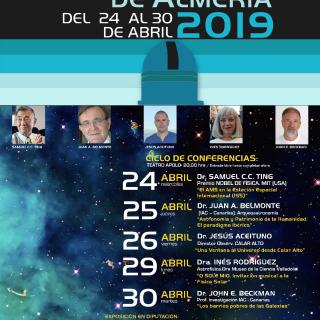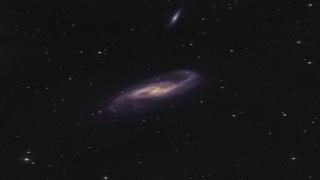Bibcode
Seibert, Mark; Salo, Heikki; Regan, Michael W.; Mizusawa, Trisha; Menéndez-Delmestre, Karín; Madore, Barry F.; Laurikainen, Eija; Laine, Jarkko; Kim, Taehyun; Ho, Luis C.; Hinz, Joannah L.; Gil de Paz, Armando; Comerón, Sébastien; Buta, Ronald J.; Sheth, Kartik; Muñoz-Mateos, Juan Carlos; Gadotti, Dimitri A.; Bosma, Albert; Athanassoula, E.; Sánchez-Gallego, José Ramón; Falcón-Barroso, Jesús; Beckman, John E.; Font, Joan; Knapen, Johan H.; Erroz-Ferrer, Santiago
Referencia bibliográfica
Monthly Notices of the Royal Astronomical Society, Volume 427, Issue 4, pp. 2938-2949.
Fecha de publicación:
12
2012
Número de citas
20
Número de citas referidas
19
Descripción
We present a study of the kinematics of the isolated spiral galaxy NGC
864, using Hα Fabry-Perot data obtained with the Galaxy Hα
Fabry-Perot System (GHαFaS) instrument at the William Herschel
Telescope in La Palma, complemented with images at 3.6 μm, in the R
band and in Hα filter, and integral-field spectroscopic data. The
resulting data cubes and velocity maps allow the study of the kinematics
of the galaxy, including in-depth investigations of the rotation curve,
velocity moment maps, velocity residual maps, gradient maps and
position-velocity diagrams. We find asymmetries in the velocity field in
the bar zone, caused by non-circular motions, probably in response to
the potential of the bar. We also find a flat-profile bar, in agreement
with the strong bar, with the grand design spiral pattern, and with the
gap between the ends of the bar and the start of the spiral arms. We
quantify the rate of massive star formation, which is concentrated in
the two spiral arms.
Proyectos relacionados

Estudios Cinemáticos, Estructurales y de Composición, de los Medios Interestelares e Intergalácticos
El objetivo básico del proyecto es investigar la evolución de las galaxias mediante el entendimiento de la interacción del medio interestelar y las estrellas. La técnica principal que utilizamos es la cinemática bidimensional de galaxias enteras observada por nuestro instrumento GHaFaS, un interferometro Fabry Perot en el telescopio William
Prof.
John E. Beckman

Huellas de la Formación de las Galaxias: Poblaciones estelares, Dinámica y Morfología
Bienvenida a la página web del g rupo de investigación Traces of Galaxy Formation. Somos un grupo de investigación amplio, diverso y muy activo cuyo objetivo principal es entender la formación de galaxias en el Universo de una manera lo más completa posible. Con el estudio detellado de las poblaciones estelares como bandera, estamos constantemente
Anna
Ferré Mateu

Las Galaxias Espirales: Evolución y Consecuencias
Nuestro grupo pequeño esta bien conocido y respetado internacionalmente por nuestro trabajo inovativo e importante en varios aspectos de la estructura y la evolución de las galaxias espirales cercanas. Usamos principalmente observaciones en varias longitudes de onda, explotando las sinergías que nos permiten responder a las cuestiones más
Johan Hendrik
Knapen Koelstra